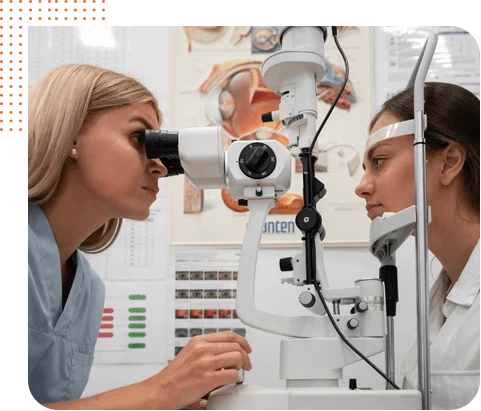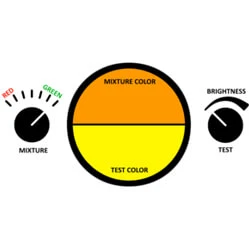Color Vision Testing
Eyes on Brickell is a leading Eye Clinic in Miami that provides comprehensive eye care services. We offer high-quality vision and eye care services to help our clients see the world with crisp and clear vision. Our optometrists are dedicated to bringing positive change to your life, whether you are seeking complete eyewear solutions such as contact lenses and glasses or eyecare services, including eyelift (Blepharoplasty), ptosis repair, LASIK surgery or Color Vision Testing in Miami.
Under the guidance of Dr. Antoine Copty, an internationally qualified optometric physician, we provide top-tier care utilizing advanced technologies. The screening test for color vision is a specialized process we use to assess patients’ ability to perceive and differentiate between colors accurately.
This allows us to diagnose various types of color vision deficiencies, including red-green color blindness, blue-yellow color blindness, and total color blindness (achromatopsia). It is also an essential part of our comprehensive eye exam, aiding in the monitoring and diagnosis of specific eye diseases or conditions.

What is Color Vision Testing?
It is a non-invasive diagnostic process that helps measure an individual’s ability to perceive and differentiate between various colors. Also known as the Ishihara vision test, the Color Vision Online Test can assess an individual’s ability to see color. Failing this test may indicate poor color vision, typically involving an inability to differentiate shades of green from red. Genetics, certain diseases, medications, aging, and chemical exposure commonly contribute to poor color vision.
A report by Color Blind Awareness reveals that almost 1 in 200 women and 1 in 12 men experience color vision blindness. Additionally, color vision impairment can result from diseases such as sickle cell anemia, Parkinson’s disease, Alzheimer’s disease, leukemia, macular degeneration, alcoholism, and diabetes. Therefore, we recommend that our patients undergo a Color Vision Test Doctors Near Me in Miami to ensure they receive a proper diagnosis and treatment plan.
What are the Benefits?
- Detects color vision deficiencies.
- Aids in diagnosing eye conditions and diseases.
- Assesses medication side effects on color perception.
- Determines suitability for color-critical professions.
- Provides customized solutions for color-impaired individuals.
- Ensures safety and accuracy in tasks reliant on color recognition.
- Supports patient counseling and education.
What Happens During Color Vision Testing?
Although several recommended methods exist to conduct color vision testing, the Ishihara Color Vision Test is often considered the best. Farnsworth-Munsell 100-Hue Test and Anomaloscope are other color vision tests that can help determine the nature and extent of color vision deficiencies.
Let’s understand what happens during the Ishihara Color Vision Test:
- A series of plates containing colored dots is presented to the individual.
- Numbers or symbols made of different colors are hidden inside the dots.
- People with normal color vision can see and recognize numbers or symbols easily.
- People with color vision deficiency may have difficulty recognizing hidden shapes.
- The patient’s responses are used to determine the presence and type of color vision deficiency.





